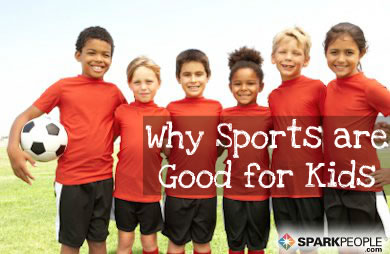|
Do you remember elementary school recess? Can you conjure up vivid images of your play time? I think I jump-roped around the globe over the course of my elementary school recess hours. The traditional, two-people-hold-one-jump rope game was my forte. I can even hear the song in my head: "Strawberry shortcake, cream on top, tell me the name of your sweetheart..." The group then sang out a letter of the alphabet with each jump. Hopefully, if the boy you "liked" started with an S or T or W, you would be able to jump long enough to land on the right letter. As children, we looked forward to running free during that period of time during the day. No hall pass. No permissions needed. Little teacher interference. Fresh air. Pure and simple play. That was the 1970s and 1980s for me. Over the course of the past two decades, however, fewer children have been able to experience the freedoms of recess. Perhaps the biggest contributor to the decrease in recess for children has been increased academic expectations. In a nutshell, in came academic standards and out went recess. It made sense to many: If there are higher demands academically and more accountability of schools, teachers, and children, then recess (the perceived "perk") must go. The problem: Children need recess! A recent report issued by the American Academy of Pediatrics received a lot of attention. The report, supported by research, communicated what many parents and teachers (and even children) already know about the importance of recess. Aside from giving kids a chance to be active, which is what we usually associate with recess, recess is associated with more attention and productivity during learning times and better development of social-emotional skills such as negotiation and cooperation and sharing. The news confirms earlier reports. The AAP said five years earlier that free and unstructured play contributes to health and cognitive development, and to social and emotional development (helps kids manage stress and increases resiliency). Yet, the National Center for Education Statistics in 2005 reported that approximately 15% of children have no recess and of the other 85%, some have as little as 15 minutes or less. In 2006, School Health Policies and Programs Study reported that 11% of states require recess in elementary schools and 57% of school districts require it. A silver lining perhaps: It was also reported that 79% of elementary schools reported that they actually do provide recess. But here's more worrisome news: Gallup in 2009 stated that two-thirds of principals reported taking away recess as a punishment. It is often those who have recess taken away who most need that time to better concentrate in school, and there is a significant difference in access to recess economically and racially. According to the Teachers College Record report:
We are a confused nation. We so want our children to do well, but often policymakers do not know how to make that happen. Policies go into place, only to be replaced by others. Perhaps we can benefit by going back to the basics and recognize that kids need a chance to be kids. Then, we can build from there. Some kids are in school more hours per week than their parents are at work. Add homework to that—how many of us want to work at work and then when we get home from work? Kids and adults need a break. Evidence shows recess need not be an hour or even a half hour of recess, but children need time to free their minds and bodies from the confines of the classroom. What can you do? Advocate! Have a voice! Be educated! Do you know if your child has recess? If so, how long is it? Does your child’s teacher take away recess time for children to finish work or as a punishment? If you do not know the answers, find out. Something so simple can go a long way in helping children succeed. Together, we can bring recess back!  Michelle Stroffolino Schmidt is Chairperson of the Department of Psychology at Moravian College in Bethlehem, Pennsylvania. Her research focuses on social and emotional development in childhood and adolescence. She has published research on parent-child attachment, friendship, peer relations, bullying, and mentoring. She has also done consulting work with schools as part of their bullying prevention and intervention programs. Michelle recently published the book Friendships in Childhood and Adolescence (Guilford Press), which explores the significance of friendship from toddlerhood through adolescence. The book examines factors that contribute to positive friendships, how positive friendships influence children’s lives, and interventions for those who have friendship difficulties. Michelle is the mother of a 7-year-old son, William, and a 2-year-old bulldog named Eve. She enjoys yoga, kayaking, writing, and cooking. |
Popular EntriesMore From SparkPeople
|








.png)









